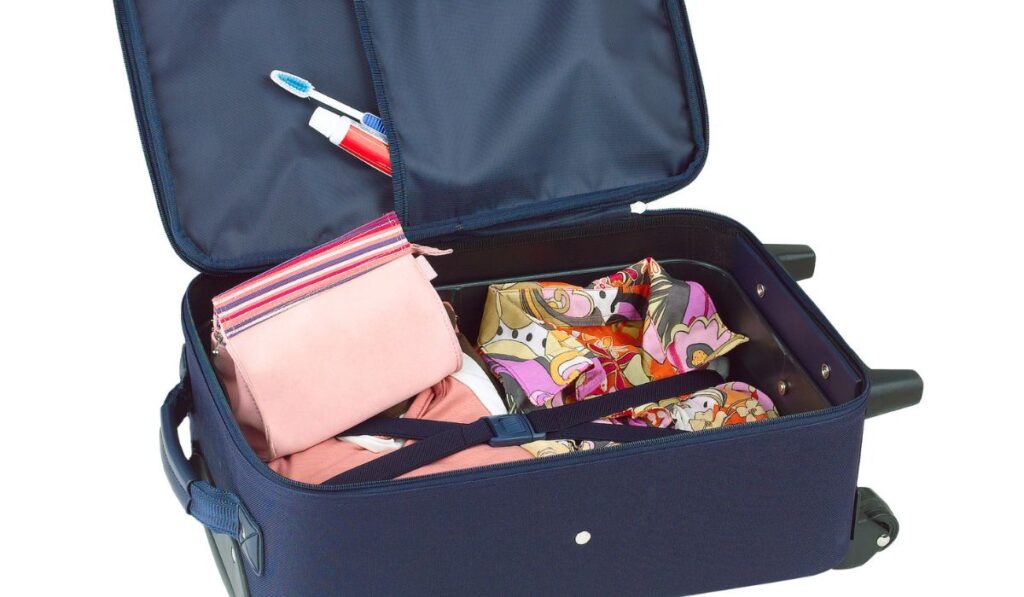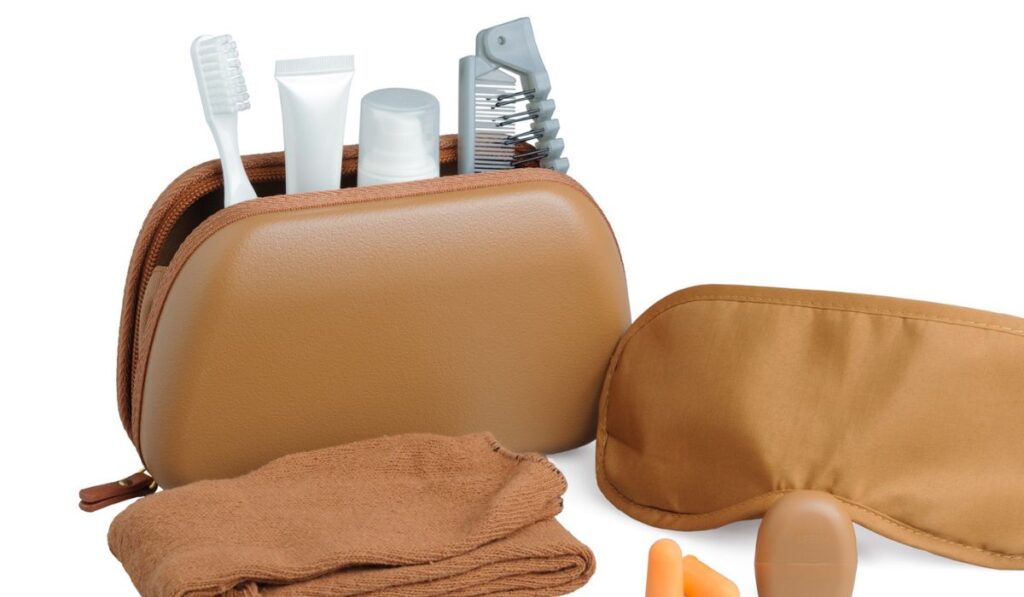Traveling abroad and domestically can be challenging if you’re exploring new territory. One of the things you need to do to prepare is to pack the right items, especially hygiene products like toothpaste. While enjoying your vacation, you also want to keep your teeth sparkling clean.
According to the TSA, you can carry toothpaste in a carry-on bag, but only in limited quantities. This is because toothpaste is considered a gel, and airline regulators have rules for liquids and gels carried in hand baggage. And it must be stored in a container no larger than 3.4 oz (100 ml).
The Transport Security Administration (TSA) offers several regulations regarding the items you can pack and in what quantities because of safety, as anything could be used as a weapon. So now, let’s learn more about toothpaste and travel.
Can You Pack Toothpaste in Your Carry-On Bag?

The TSA directs that you can pack any toothpaste brand in your luggage. You must stay within the allowed limit, as containers larger than 3.4 oz are not allowed. However, if you want to carry more than this amount, you’re allowed to pack toothpaste of any size in checked luggage.
Besides toothpaste gel, you can carry toothpaste tablets. These are in solid form, so you don’t need to follow the 3-1-1 rule. Also, if you place the tablets inside your hand luggage, they don’t need to be inside a quarter-sized toiletry bag, which saves space. These are handy if you’re a backpacker and travel frequently.
But if you also want to carry mouthwash, it must follow TSA’s 3-1-1 rule. The mouthwash must be in a container no larger than 3.4 oz and stored with other toiletries. You can also purchase smaller containers for this purpose – options like these Morfone Leakproof Travel Containers (on Amazon) are designed for you to fill with your own toothpaste and/or mouthwash at home so you don’t have to purchase separate travel sizes of the same products.
However, if you do really like the whole miniatures thing, those are pretty reasonably priced too, and you can find travel-sized options of all your favorite brands like Crest, Colgate, and Listerine (all on Amazon).
Prescription Toothpaste
Prescription toothpaste is allowed in a carry-on bag, and the benefit is that it can exceed the 3.4 oz limit. In addition, if the toothpaste was prescribed by a medical professional and is stored in its original packaging, you’re allowed to take any amount inside a carry-on.
Keep in mind you must present your prescription as well. Also, you don’t need to store the toothpaste in the same section as toiletries, as it’s considered a medication.
How Many Liquid Items Can You Have in a Carry-On?
The TSA accepts liquids in containers below 3.4 ounces in a carry-on, but what can be considered a liquid, as this is not always obvious. Keep in mind if the container is larger than 3.4 ounces and its contents are 3.4 ounces, you cannot bring it into the plane in a carry-on. Anything exceeding 3.4 ounces goes into checked luggage.
The 3-1-1 rule is also applicable to food, which means any food that counts as liquid, paste, or gel (like peanut butter, yogurt, jams, etc.) is less than 3.4 ounces, and if more, it should be in a checked bag. However, there are a few exceptions, including juice and frozen foods for babies.
However, the TSA offers a few exceptions to the liquids rule. This includes hand sanitizer, which you can carry up to 12 ounces in a carry-on bag. The sanitizer is screened separately. Also, you can carry medically necessary liquids, gels, and aerosols. This includes gel and ice packs that help to keep medication cool.
Like medication, you’re also allowed to pack baby formula and breast milk. For these, you can carry freezer packs, but you should notify an agent when going through security. Of course, the final decision on what will be allowed rests with the TSA officer.
How to Follow the 3-1-1 Rule

The TSA offers a rule called 3-1-1. This stands for 3 oz, one quart-sized bag, and one passenger. So, each passenger is only allowed to carry a tube of toothpaste in a carry-on bag as long as the tube is not larger than 3.4 oz, and it should be in a one-quart-sized bag.
While many passengers check to ensure their toothpaste in a carry-on doesn’t exceed the required limit of 3.4 oz or 100 ml, those with prescribed toothpaste are allowed to disregard the 3-1-1 rule.
TSA says they allow larger amounts if you have medically necessary liquids or gels but in reasonable quantities. You need to declare these items to TSA officers during an inspection at the checkpoint. Toothpaste is removed from the carry-on and inspected separately from other belongings.
International Travel
But what if you’re traveling internationally? Does this rule still apply?
Indeed, the rule not to carry aerosols, liquids, and gels not exceeding 3.4 oz. is standardized globally in both domestic and international flights. So, regardless of the region, you’re flying into, you should keep in mind the 3-1-1 rule.
Which Items are Not Allowed in a Carry-On?
Before packing your bags, it’s essential to understand which items are not allowed in a carry-on bag. Most of the prohibited items can be packed in checked baggage, or you could leave them at home if not necessary.
Note that some of these restrictions vary depending on the airport and country you’re flying from. These are some of the things you can’t include in your carry-on.
- Guns and ammunition, including cap guns and BB guns.
- Tasers and stun guns.
- Gels, liquids, and pastes in containers larger than 3.4 oz.
- Sharp objects like axes, knives, and razor blades.
- Explosives, including fireworks.
- Self-defense items like a brass knuckle, pepper spray, and billy clubs.
- Tools bigger than 7 inches long.
- Baseball bats, skis, and bowling pins.
Conclusion
When packing, it’s essential to know what you can carry and in what quantity. For example, you don’t want delays at the checkpoint because you brought too much toothpaste in a carry-on.
To avoid all confusion, check TSA 3-1-1 rule, which specifies you can only carry liquids in containers no bigger than 3.4 oz. Also, keep in mind items prohibited to carry in your luggage.


